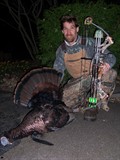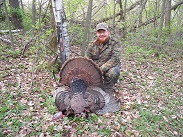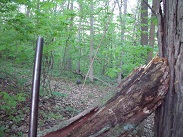Shabbona Lake hosts Rockfest
Sportsman’s Club will put artificial structures into lake
Experienced anglers know that most fish are found in only a relatively small portion of a lake. The reason is structure.
Structure is what makes fish congregate in certain locations. Fish also use structure as a route when migrating from one place to another to feed or spawn.
What is structure? In a lake, natural structure is the lake bottom, rocks, trees, weeds, drop-offs and more.
But it can also be artificial. Fish cribs, stake beds and fish habitats, made by or put in the water by man, are examples of artificial structure. A fish crib can be pilings of criss-crossed wooden boards. Habitat can look like a bush made of a dozen or more pieces of plastic tubing set into a 5-gallon bucket filled with concrete. Sometimes discarded Christmas trees are tethered to a concrete block and sunk in the water. A pile of rocks is another example.
One thing that most artificial structures do is accumulate algae. Small-bait fish and fry are attracted for the food and cover. Their presence in turn attracts panfish and gamefish.
Fish use structure to find food and as cover, either from sunlight or from predators. Some fish will place themselves in cover as an ambush point when they are the predator.
The bottom line is that artificial structures are often placed in heavily fished lakes to create more fishable locations.
One such body of water is Shabbona Lake in DeKalb County. On Saturday, the Shabbona Lake Sportsman’s Club will host the 11th annual Rockfest. But this is no music festival. It’s an event where rocks will be placed into the lake for artificial structure.
“Three truck loads of rock, 20 tons each, are coming from the Macklin quarries in Rochelle.” said club President Rich McElligott. “So we’re always looking for helpers who will load rocks on plywood sleds. ATVs will drag the sleds out to onto the lake and the rocks will be dumped into the water through a hole in the ice. Bobcats will bring out the bigger rocks.”
The rocks are mostly the size of softballs or basketballs. They’re also getting about 50 rocks that are will be 2-foot-by-3-foot.
This year, rocks will be placed by an underwater point across from the spillway. Some large dead trees that have been collected at the Shabbona State Park also will be submerged at other parts of the lake. The Illinois DNR fisheries biologists are always consulted before adding the artificial structure.
Since this program started 11 years ago, more than 1,000 tons of rocks have been added to various locations at Shabbona Lake, including some shorelines where rock was used for rip rap to help reduce erosion. The Illinois Smallmouth Alliance, DuPage River Fly Tyers and Shabbona Lake Sportsman’s Club each purchased a truckload for this event.
The event has in years past drawn from 35 to 75 helpers. Once the work is completed, the club hosts a brat and hot dog cookout. Many helpers spend the rest of the day ice fishing.
Volunteers are asked to meet at the Shabbona Lake park office at 8:30 a.m. Saturday. Shabbona Lake is off Route 30 by the town of Shabbona in DeKalb County. For more information on this event, call Rich McElligott at 815-824-2523.
Don Dziedzina’s blog is at Illinoisoutdoors.com


